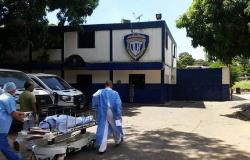The rise in meat, bread, milk and other basic products is not explained only by inflation or production costs. According to the latest report of the Agricultural Foundation for the development of Argentina (FADA), taxes have a determining weight in the prices paid by consumers and, in some cases, exceed the gain of producers and merchants.
Since April, the Customs Collection and Control Agency (ARCA) requires businesses to detail the value of products with and without taxes both in gondolas and in purchase tickets. This measure, oriented to “fiscal education”, seeks to make visible the tax burden faced by citizens when acquiring food.
A survey by Fada states that, for example, in each kilo of meat, 25% corresponds to taxes, while 60% are production costs and the rest, gain. Milk has a 26% tax load compared to only 7% profitability for producers. In the PAN, taxes reach 24%, compared to 16% gain.
“Every four bolts of bread, one is taxes. Every glass of milk we drink represents a disproportionate tax burden against the margin that remains in the chain,” said Antonella Semadeni, Fada economist. According to the report data, the bread price is multiplied by 12 from the field to the consumer table.
In April, the price of vaccine meat increased 6.1%, while pork rose 1.7%, according to the Institute for the Promotion of the Argentine Vaccine Meat (IPCVA). The interannual variation widely exceeds general inflation: in the case of vaccine meat, the rise was 65.1%and in pork, 74%, compared to a general index close to 47%.
-Guillermo, a neighborhood butcher, describes how he tries to adapt to the situation: “You cannot always move the increase to the counter. You have to hold sales. Two kilos of milanesas to $ 20,000 or a kilo of hamburgers at $ 8,500 … Everything helps the customer return,” he says.
Fada also breaks down the structure of the price in different chains. In the case of bread: 8% is wheat, 4% corresponds to the mill, 64% to the bakery and the rest are taxes. In milk: 28% is tambo, 26% industry, 20% trade and 26% taxes. In meat: 28% breeding, 24% feedlot, 2% fridge, 21% butcher shop and 25% taxes.
“We are paying much more in taxes than in profits. The State is present in all links without assuming any of the risks of production, neither climatic or financial,” questioned Nicolle Pisani Claro, chief economist of Fada.
With these figures, the debate on fiscal pressure and pricing charges new strength. From Fada they aim to tear down myths: “There are many factors that affect prices. It is not just the field or a specific policy. The report shows that the system is much more complex and that we need to look at it in an integral way,” Semadeni concluded.





